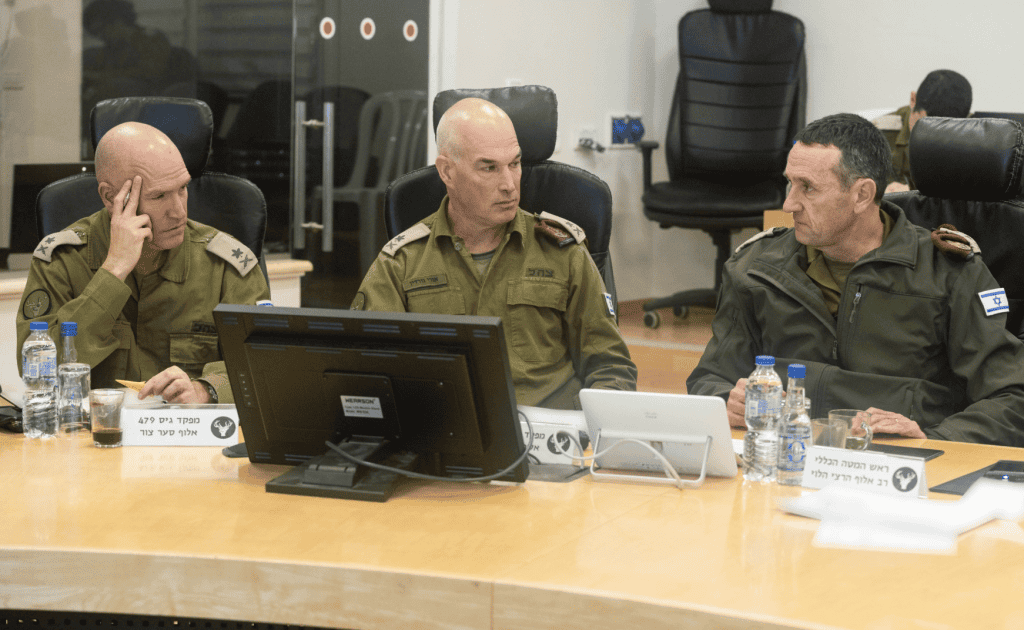
Israel is facing threats on multiple fronts, Israel Defense Minister Yoav Gallant said on December 26. The multi-front war is one that Iran has been seeking to bring to Israel’s borders for several years. Gallant said, “we are in a multi-front war. We are being attacked from seven different arenas: Gaza, Lebanon, Syria, [the West Bank], Iraq, Yemen, and Iran.” He said Israel had responded in six of these arenas. The statement comes as Israel is facing increasing attacks from Hezbollah in Lebanon and also focusing on potential strategy shifts in Gaza.
In northern Israel on December 27, the IDF Chief of Staff Herzi HaLevi told IDF troops that Israel is in a state of high readiness. He was conducting a situational assessment and visiting Israel’s Northern Command. He met with Northern Command head Maj. Gen. Ori Gordin. “Our first task is to safely return the residents, and this will take time. Today, we approved plans for a variety of contingencies, and we need to be prepared to strike if required,” Halevi said according to a statement distributed by the IDF. He reiterated claims that Israeli officials have made: “We will not return the residents without both security and a sense of security.” This means that as long as Hezbollah continues its attacks, some 80,000 Israelis cannot return to 40 northern communities near the border.
Incidents in the north received attention in Israeli media on December 27, including one in which a home in the northern city of Kiryat Shmona was struck by one of the rockets fired by Hezbollah at northern Israel. The IDF said it responded. Israel’s reactions in the north are generally to respond to attacks proportionately. This means that Israel waits for Hezbollah to attack and then responds, typically without striking first. For instance on December 27, three drones were launched by Hezbollah from Lebanon toward Mount Dov. Mount Dov is an area controlled by Israel and often attacked by Hezbollah in an attempt to assert Lebanese ownership of the disputed area. Hezbollah also launched rockets toward Rosh HaNikra, an area in Israel overlooking the Mediterranean. “The IDF struck the sources of fire,” it said. On December 26, the IDF said Hezbollah fired an anti-tank missile at a Greek Orthodox Church in northern Israel, wounding a two civilians and nine soldiers.
In Gaza, after more than eighty days since the October 7 attack by Hamas on Israel, there is now an increased focus on the next phase of the war, including whether Israel will transition to a “low intensity” conflict. However, Israel’s leaders continue to vow to defeat Hamas and bring back the hostages held in Gaza. In addition, Halevi said on December 26 that the “the war will continue for many more months, and we will operate in various ways – so that the achievement will be preserved over time.”
Israel continues to operate in several key areas in Gaza. In the north, portions of several IDF divisions are focused on the built-up area of Jabalya. In Shujaiya, another IDF division continues to fight Hamas. The IDF also highlighted operations in Daraj Tuffah, also in northern Gaza. The IDF is also fighting Hamas in southern Gaza, particularly in Khan Yunis where the IDF’s 98th division is backed by tanks and other forces. Between December 25 and 26, there were more than 100 strikes in Gaza. This is a reduced number compared to earlier in the war, when the IDF would sometimes report between 200 and 300 strikes in one night.
The IDF also expanded operations to target several areas in central Gaza, including al-Bureij, Deir al-Balah, Nuseirat and Al-Khuza’a. Khuza is on the border with Israel near Nir Oz and Kisufim. I was on the Gaza border in Kisufim on December 27, and there were sirens warning of rocket or mortar launches from Gaza. Artillery fire could be heard in the distance.
Procurement of spare parts and munitions for the ongoing war is essential for Israel. The war is now longer than any campaign since Defensive Shield in the early 2000s. Israel’s Ministry of Defense said on December 27 that it is increasing its procurement for Israel’s Namer Armored Personnel Carriers. The Namer is used by key battalions, such as Golani, for fighting in Gaza. The Ministry has now ordered a variety of parts as well as protection for the APCs. It did not specify if the protection includes armor or the Trophy system which is installed on the vehicles. There have been very few reports of APCs being badly damaged in Gaza and the protection systems appear to be working as expected. The IDF currently has not specified any numbers for interceptions with the system in this operation.
In total, 498 IDF soldiers have been killed since October 7.







